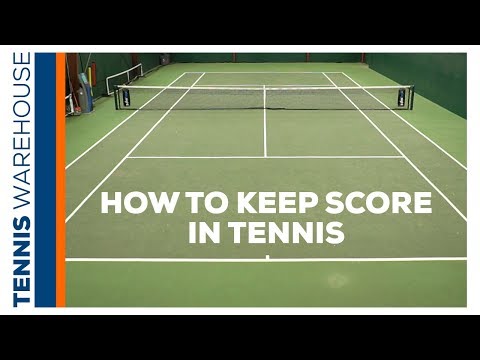Why Is Scoring So Weird in Tennis?

Table of Content
The French Open is currently going on, and we are using the same tennis scoring method that is used hundreds of years ago. Rafael Nadal is bidding for his 13th French Open title, but to win the title, he has to beat Alexander Zverev, Dominic Thiem, and Novak Djokovic. Tennis podcasts will help to remain updated about the tournament, which is currently in its 3rd round.
How does tennis scoring work?
Every game has its scoring mechanism, and usually, it’s an easy one. But tennis scoring is quite a tricky thing to understand. The first point is scored as 15, then 30, then 40, and then game. Means, you have to win four points to win a game. From the likes of Rod Laver to Jimmy Connors to John McEnroe to Pete Sampras to Roger Federer to Rafael Nadal to Novak Djokovic, all the players competing, whether at club level or the ATP tour goes through the same scoring method to win matches.
But the question arises why the tennis scoring is scored in such an intricate manner and not with easy numbering like 1,2,3, etc.?
Why is scoring so weird in tennis?
The game has its history dates to the 14th century. Unfortunately, the scoring system’s origin is unknown, and we don’t see how this scoring method started initially. However, there are few theories or assumptions that explain how tennis scoring started that manner. The weird scoring dates back to as far as the tennis racket and the tennis grips itself. We look at a couple of such theories.
Assumption no 1
It is sometimes believed that the clock faces the tennis scoring with a quarter move of the minute to indicate 15, 30, and 45 (initially later changed to 40). The match was ended when the hand moved to 60.
There was one problem with 45 that players couldn’t win a game with only a one-point difference. To ensure that a one-point difference could not win the game, the term deuce was introduced. To have the score within the limits of 60 on the clock face, the 45 was changed to 40. When both the players reached the score of 40, the first player to score would get 10 (taking the score to 50), and if he wins the next point, he will receive another 10 to take the score to 60 and win the game. However, after 50, if the other player score, the clock was again moved to 40. Thus, to win the game, a player has to win two consecutive points.
Assumption no 2
A famous French game of its time, Jeu de paume, was the initial form of tennis that was played with hands instead of racquets. It was prevalent before the French revolution, with more than 1000 courts only in Paris. In this game, the court was 90 feet in length, with 45 feet on each side. Whenever the server scored a point, he would move 15 feet forward. If the server scored again, he would move another 15 feet. If the server cut a third time, he or she could only carry 10 feet closer. That’s how the tennis scoring originated in the early years of its development.
What does love mean in tennis?
Whenever we see a tennis match, we don’t know any love between the players, then how can the term “love” be associated with tennis?
It is believed that the word love is derived from the French word “l’œuf,” which means egg. Since the number 0 also looks like an egg, the term l’œuf was associated with number 0. The term l’œuf was later changed to love for its simplicity.
The Score is Arbritary Just like in football, why is a touch down worth 6(7) points? Why Is there fuzz on a tennis ball? It is just what we have grown accustomed to and learned to love! Whether it’s the Shanghai Masters or the Australian Open, whether it is an ATP 500 event or ATP 250 event, whether you’re a club player or you have an excellent UTR ranking, don’t forget you’ll be using the same scoring method that is used hundreds of years ago without actually knowing the reason of its origin. Quite strange. Have a great tennis session.




